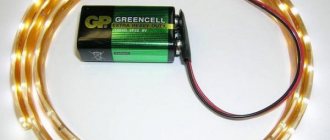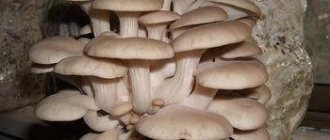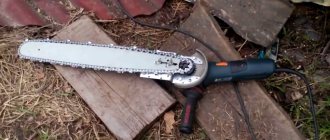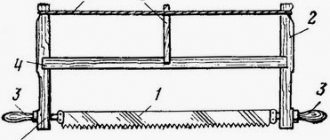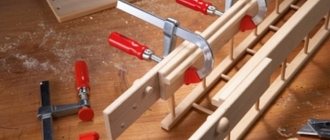The body needs vitamins at any time of the year. But in winter, when the immune system weakens, they are especially necessary. Green onions, which are easy to grow at home, will help make up for the deficiency.
For this matter, it is better to use multi-nest varieties.
You can determine which ones are suitable in the following way: cut off the top of the turnip by 1/3. If several green primordia are visible in the section, then it is multi-nested and suitable for obtaining a feather.
A good growth stimulator will be soaking the bulbs in water with the addition of Kornevin or Epin.
Immediately before planting, a disinfection procedure is carried out, each one is immersed in a weak solution of potassium permanganate for 1 hour, then slightly dried (don’t forget!).
Which variety to choose
All varieties of onions produce feathers, but greenhouse production has its own favorites.
They produce a bountiful harvest, have excellent taste, retain freshness for a long time, and are easy to care for. I'll tell you briefly about each of them.
Leek
Externally, leeks resemble garlic. It produces wide, short leaves and has a pronounced but delicate taste. Good for salads and fresh consumption. From a bed of 9 square meters it produces 20 kilograms of feathers. Suitable for year-round greenhouse cultivation. Grows well in open ground and greenhouses.
Batun
It can be perennial or annual. Produces wide, tubular, succulent feathers. The taste is sweetish and delicate. The feather is tender throughout the growing season. Sown by seeds. In the first season, the plant takes root and gains strength.
Active fruiting begins in the second year. The variety tolerates frost well and is suitable not only for open ground, but also for greenhouse and greenhouse cultivation. Gives arrows with seeds. It sows itself in the ground.
shallot
This is a branched variety with pronounced greenery and small bulbs. The variety is suitable for forcing in a greenhouse and growing on a windowsill. It is planted on greenery three times a year: in spring, autumn and summer. Gives an early harvest. The feather is soft and juicy throughout the growing season. The shooter does not. Planted with bulbs.
Egyptian
This variety has underground and aerial bulbs. It is called multi-tiered because new bulbs grow on its arrows, from which a young plant develops. It does not have a dormant period and bears fruit consistently all year round. Unpretentious. Grows well even at 10-12 degrees Celsius. Frost-resistant, suitable for cold regions.
Preparation of planting material and planting
Green onions can be planted either on the ground or using hydroponic installations, which have already been mentioned several times on our website. However, due to the unpretentiousness of onions (from this point of view), it is easier to plant them in the ground.
Plain garden soil is usually used. You can add sand and peat. You can also use a special substrate.
Carefully cut off the top of each onion.
It is advisable to choose relatively small bulbs themselves (about 3–5 centimeters in diameter). Carefully sort through and remove spoiled and moldy specimens. The tops of the selected bulbs are cut off (about 1 centimeter), after which the planting material is placed in warm water for several hours.
Then you can start planting. The bulbs can be placed quite close to each other, leaving gaps of a few centimeters. Do not bury them completely in the ground, leaving the top of the bulb above the surface.
It is recommended to fertilize the soil immediately before planting. It is also advisable to repeat the procedure again after a couple of weeks.
Location and lighting
Immediately after planting, the bulbs should not be placed in direct sunlight. It is better to keep the turnips in a slightly shaded place for 9-10 days. Then they will grow strong and strong roots, which will have a positive effect on the future harvest.
During active growth of greenery, the planting should be moved closer to the most illuminated window. It is desirable that it faces the south, south-east or south-west.
If natural light is insufficient, then you can place a phytolamp near the planting. But to prevent the device from heating the bulbs, which negatively affects their development, it is advisable to install it 50-60 cm from the container. And in order for the greens to appear faster, it is better not to turn off the device at night.
Planting technologies
At home, it is customary to plant onions, placing them as close to each other as possible. The use of seeds requires a period of time for the formation of the feather part (2-4 months); the bulbs germinate within a few days.
Seeds
Seed material is planted on the windowsill extremely rarely, since feathers do not appear soon, but require special care. Planting technology:
- Place a drainage system at the bottom of the container;
- pour a layer of soil on top;
- make grooves to a depth of 1.5 cm;
- plant seeds in the holes (distance between them is 2-5 cm);
- moisten the soil;
- cover with film until sprouts appear;
- place in a warm, bright place.
Planting bulbs
Bulbs can be planted in different ways - in water, soil, sawdust - using a variety of containers:
- Landing in the water.
There is a classic option - pour water into a container (disposable glasses, jars, etc.), put onions and wait for the greens to appear. This technique is outdated and has disadvantages - rotting of the vegetable, the formation of unpleasant odors, and the appearance of midges. Today, many people use an improved technique that speeds up the growth process of feathers and minimizes problems.Step-by-step instruction:
- Cut off the top of the onion and pierce the bottom (where the roots are) with a skewer.
Pour settled water at room temperature into the container, dissolve 2 tablets of activated carbon, lower the head so that only the root part is in the water.
- In a day the roots will begin to grow. Now you need to drain the liquid a little so that it does not touch the bulb, but only affects the growing roots.
- After 12-16 days you can harvest your greens.
- Landing in the ground.
This is the best option, eliminating unpleasant odors and rotting. Prepare the soil, healthy bulbs, containers - container, pot, box. If you use leeks, be sure to sprout them in water for a week first. Next, proceed as follows:- soak the onion roots in water for 2-3 hours;
pour 6-7 cm of soil into the container;
- make holes according to the size of the heads, 2-3 cm apart from each other;
- plant the vegetable to a depth of 2 cm (only the root will be in the ground);
- water generously with settled or rainwater;
- leave the container in a dark place for 2-4 days, then transfer it to a lighted windowsill.
- Hydroponics.
This method is used when planting a large number of bulbous crops. Slab mats are used, which can be purchased at a specialized store. The operating principle of hydroponics is based on the enrichment of oxygen and nutrients, due to which the green mass grows quickly.About the features of growing onions using hydroponics, watch the following video:
- Growing in sawdust.
Instead of soil, the bulbs are placed in moistened sawdust. This makes it possible to avoid putrefactive diseases, bad odors, and dirt. The only negative is that after collecting the greenery, the sawdust needs to be changed.Planting process:
- disinfect sawdust with boiling water;
put them in a container;
- deepen the bulbs by 3 cm;
- pour water;
- place the container on the sunny side of the apartment.
- Growing in a bag.
Take a thick plastic bag, toilet paper, prepared heads. Instructions:- Place paper at the bottom of the bag, moistening it;
place the bulbs tightly to each other;
- inflate the bag with air;
- tie tightly with rope or rubber band;
- place in a dark place for the root system to germinate;
- after 3 days, expose to light;
- It is prohibited to open the package until harvest (approximately 10 days).
- Bottle method. This is a universal vertical method of feather forcing, saving space on the windowsill. What you will need:
- 5 liter bottle (only after food drinks);
scissors/knife;
- onion;
- priming;
- expanded clay stones.
About growing onions in water, watch the following video:
Feathers are collected after 10-15 days. To prevent rotting during watering, add hydrogen peroxide to the water (per 1 liter - 10 ml).
To learn how to plant onions in sawdust at home, watch the following video:
To learn how to grow onions in a bag, watch the following video:
Preparing the container:
- cut off the neck;
- cut holes along the lower perimeter (the size depends on the diameter of the vegetable, the number depends on the number of root vegetables);
- make the remaining holes in a checkerboard pattern;
- sand the edges of the holes with sandpaper or a soldering iron;
- pierce the bottom with an awl to create a drainage system.
Planting process:
- place the stones in one layer at the bottom of the bottle;
- sprinkle a little substrate of soil, peat and humus on top;
- compact the soil;
- place the prepared heads into the holes (horizontally), adding soil;
- Place the top bulbs vertically;
- pour water.
How to get onions for the New Year in egg trays
A variation of the previous method is forcing onions onto greens in egg cartons. To do this, it is necessary to use not paper, but plastic or foam packaging, because... they must contain water.
Prepare the egg trays:
- Using scissors, cut the egg container into two parts: separate the lid from the part in which the eggs are located.
- Make holes in the bottom of the egg wells.
- Place a tray with holes in the lid (it will act as a tray).
- Prepare the onions in the same way as described above. Place the heads into the egg wells. For this forcing option, try to take bulbs of such a size that they fit into the cells.
- Add enough water to lightly touch the bottom of the bulbs.
To create a hole for ventilation, insert kebab skewers, pencils or sushi sticks between the top and bottom of the tray. Thanks to them, a hole will appear between the two halves of the container.
Some summer residents add 2 tablets of activated carbon to it to prevent water spoilage.
Caring for onions involves not letting the water dry out and adding it as needed.
Optimal conditions
Let's start with the temperature regime. This is one of the most important factors that directly affects the speed of obtaining green onion “feathers”. The optimal temperature for achieving results as quickly as possible is +20 - +25 °C. In this case, you will get green sprouting after about three weeks.
It should be noted that the basement is an excellent option for maintaining a good temperature. In summer, it may well be in the region of the required indicators, and in winter it will only be enough to additionally heat the room.
Onions will grow well if you create optimal conditions for them in the basement.
Popular articles Free Easter greetings
Make sure that the temperature of the top and bottom racks (which are closest to the ground) is approximately the same. Otherwise, consider the difference in ripening speed.
Another factor that is of utmost importance in the process of growing green onions relates to the lighting system. This point is often considered a disadvantage, since it implies increased costs, including electricity. But we cannot do without additional lighting, since our greenery requires sufficient light to grow. Onions are plants whose development accelerates significantly with increasing daylight hours (photoperiod).
The minimum length of daylight hours for onions is about 10–15 hours. It is advisable to get closer to the second value, since with a lack of light we will not only slow down the cultivation, but also get an almost tasteless yellowish harvest.
It is recommended to place light sources strictly from above so that the green onion “feathers” are straight and beautiful. Incandescent lamps are ineffective; use fluorescent or special phytolamps.
Hydration also plays a significant role. Water the onions intensively, but avoid the formation of “stagnant” water. If the onion is over-watered, an unwanted process of rotting may begin. It is quite problematic to implement a drainage system on multi-tiered racks. But we covered the tiers with oilcloth, so it will be quite easy to ensure that the water has time to evaporate and does not stagnate, adjusting the intensity of watering.
Finally, let us mention the importance of good ventilation in the basement. Among other things, it will help cope with the unpleasant odor that often accompanies the process of growing green onions.
Recommendations
To get a large harvest of greens, you should adhere to the following recommendations when growing onions:
- To water the plants, you need to use filtered water heated to room temperature. It is better to let it sit for 10-12 hours.
- It is necessary to water the soil or sawdust only as the top layer dries. If over-watered, the bulbs may rot. But you shouldn’t allow prolonged drought, as this will have a bad effect on the yield.
- To prevent the container from overheating from the sun's rays, it is worth wrapping it in foil. And also the container should be kept away from heating devices.
- The bulb grows greenery for 60 days. After this time, the plant begins to die, it is necessary to replace it with a new one.
When harvesting onions grown on a windowsill, you should not cut off the first greens. This will lead to the fact that most of the shoots will not wake up and the plant yield will be significantly reduced. And it’s better to get several feathers from each bulb at a time. Then you can harvest much longer.
Growing in the ground
How to grow green onions and get high yields? To achieve the maximum amount of harvest, carefully select the planting material and prepare the place for planting it. Windows facing south and southeast are suitable for growing, and it is better to grow greens from rhizomes and root crops in wooden containers or boxes.
Planting material
For planting and subsequent forcing, large sets, selections, seeds and seedlings are used. The larger the planting material, the higher the yield. Local varieties are chosen for distillation at home. Most often, ordinary medium-sized onions (more than 6-7 cm in diameter) are used as planting material. Bulbs should be chosen that are healthy, with a bottom without damage and a thin neck. Try to use onion heads grown on your own plot, and when choosing in a store, choose medium-sized ones that have already begun to sprout. For 1 sq.m. The land area needs about 10-11 kg.
If the bulbs have not yet sprouted, their necks must be cut off and soaked in water slightly above room temperature for a day. This speeds up germination. A day later, we plant them in wooden boxes with pre-prepared soil, the distance between the planted plants should be 1.5-2 cm so that they do not interfere with each other as they grow, and the planting depth should be such that half the bulb is above the surface of the soil.
Forcing green onions from seeds is also possible. How to grow green onions from them? Before planting, the seeds must be soaked for 10 hours in warm water or a weak solution of potassium permanganate. Then plant it in a container to a depth of 3cm. You need to sow sparsely so that you don’t have to thin out later. Then water, cover with film or glass and place in a bright place. Remove the covering only when the green onions sprout. With proper sowing, it takes up to 10 days before the first shoots hatch from the ground.
When using small bulbs as planting material, be sure to add fertilizer to the soil for greater germination.
Preparing the landing site
Any container is suitable for forcing green onions at home: from plastic cups and plates to wooden boxes. It all depends on the amount of onions you decide to grow.
The selected containers must be filled with soil mixture. You can buy such soil at any flower shop or prepare it yourself in the fall. When buying in a store, give preference to a soil mixture for cacti - it contains the largest amount of sand. If you decide to prepare it yourself, take soil from the garden with humus and mix it in equal parts with regular sand. When growing green onions from seeds, sow them in well-moistened soil. Place boxes and containers with planted bulbs in sunny but not hot places.
Care
Forcing green onions does not require special care. There are only a few rules to follow:
- water for irrigation should be warm (about 35-40 degrees);
- the room temperature should be within 18-22C; with a significant increase, the onion feathers become sluggish; a decrease in temperature to 12C is well tolerated;
- if forcing green onions takes place in a poorly lit room, additional light sources are needed;
- Green onions from seeds immediately after germination require mineral feeding.
Many people wonder how to grow green onions without fertilizing? The answer is simple - high-quality soil and proper watering make it possible to completely abandon additional feeding and get a completely natural harvest.
cellophane plantation
For growing in a plastic bag, choose a high-density bag. The bag is filled with 10-15 cm of soil, then the bulbs are planted on the surface of the ground.
Instead of soil, you can use wet sawdust or moistened toilet paper folded in several layers. Make sure that the germination medium is not too wet, but just moist.
The bag with the planted material is tied at the top, creating the necessary microclimate inside and placed in the dark. As soon as the first sprouts appear, place the bag on the windowsill, but so that there is no draft.
As soon as the feathers rise 10 cm, the bag is untied and not tied again. Care consists of regularly moistening the soil, sawdust, paper, etc.
Hydroponics for onions at home
In principle, it is produced in exactly the same way as it is done on farms and in industry, except for the size of the container for growing onions and the amount of finished products.
What to grow in
These can be branded hydroponic installations specifically designed for growing vegetables. Most often they are large, in which several hundred bulbs are grown at the same time. At home, they are often not necessary and the desired structure can be made from scrap materials. For example, from a foam tank or any other, only lightproof. This can be a large flower pot, in which there is no hole in the bottom, or an ordinary large saucepan.
A plastic tank with dimensions 80/40/20 is best. It will be ideal if there is a tight-fitting lid.
Holes are made in the lid for the onion roots. They are cut taking into account the diameter of the bulbs themselves, so that the roots themselves are in complete darkness, and the bulbs do not slip through them into the water.
The lid of the tank must be sufficiently strong and elastic, since the weight of the bulbs will begin to increase over time.
Holes in the plastic cover are cut with a thin sharp knife.
Useful tips
To ensure that the holes are at an equal distance from each other, use a simple pencil to draw a grid on the lid, like in a checkered notebook. Make holes at the intersection of the lines. Since the diameter of the bulbs is 3-4 cm, the holes should be slightly smaller.
Next you will need a fluorescent lamp, a compressor and a spray gun.
It should be borne in mind that you cannot overload the tank with bulbs - otherwise there will be little water in the tank, the air from the compressor will not reach all the bulbs, they will simply swell and will not be able to germinate. The end result will be “water for dyeing Easter eggs” and not green onions.
The water in the germination tank should be warm, but it cannot be heated in the microwave - with such water the onions will not sprout at all, and the bulbs themselves will only rot.
When growing onions at home, it is also necessary to carry out bubbling and lightly trim the “bottom” of the onion. This will wake up the plant and make it actively grow.
It stimulates the bulb even more if you remove the protection from it - all the husk. In the ground, it protects against various pests, fungi, mold, etc., but with the hydroponic method of growing, none of this threatens the onion.
During the entire period of onion germination, the water temperature and oxygen saturation must be maintained. The aerator works for this purpose - it is unacceptable to turn it off even at night.
After bubbling, it is better to immediately transplant the onions into warm water. You can use an aquarium heater as such a heater.
During germination, the water in the tank should be maintained at 27-28 degrees. When the onion reaches a height of 10-12 cm, it is recommended to reduce the temperature by 2-3 degrees, otherwise the feather will turn out thin and brittle.
Egg container
Holes are made in the egg tray to drain the water, and the container is placed on a tray. For this purpose, you can use the lid of an egg tray, or a second tray that has no holes.
10-20 bulbs are planted in the recesses of the container. For this method, you can also use sets; they are planted in 2-3 pieces in one recess of the tray. In this case, the container should be filled halfway with earth.
The tray is filled with 1 cm of water, and egg trays with plantings are placed on top. You need to water through the tray. With this method there will be less rot, because the upper leaf plates remain dry.
Benefits of green onions
This product is endowed with a huge number of useful properties:
- Fresh green onions are an excellent remedy for vitamin deficiency.
- Increases appetite, normalizes digestive processes.
- Strengthens the heart muscle and normalizes blood pressure.
- Reduces blood cholesterol.
- Green onions contain chlorophyll. This substance is involved in hematopoiesis.
- The calcium contained in onion greens has a beneficial effect on the condition of the oral cavity.
- With regular use, it minimizes the likelihood of gallstones forming and has a choleretic effect.
- Onion greens contain quercetin, which neutralizes free radicals and prevents the development of cancer cells.
Popular articles Plasticine figures for children
Technology for growing green onions - what kind of room should there be for growing green onions?
Growing onions, like growing strawberries, in closed, equipped premises guarantees year-round income. In this case, human participation in the process is reduced to the simplest actions: primary processing of raw materials and collection of greenery.
Despite the unpretentiousness of the plant, general growing recommendations should still be followed. This will reduce time costs and get a good harvest.
There are three characteristics that determine ideal conditions for the growth of green onions:
- Comfortable air temperature.
- Sufficient room lighting.
- High-quality soil irrigation.
The size of the business premises is also important, which affects the volume of products produced.
The room must be dry, not infected with mold or fungi and, if possible, light.
Here are possible room options for growing green onions:
Greenhouse
The simplest summer greenhouse is made of a wooden frame, which is covered on top with a thick plastic film. You can assemble such a structure yourself using available materials and tools.
In the warm season, greenhouses and greenhouses do not require additional lighting or heating. Natural air temperature and sunlight will be sufficient for plant growth.
Growing green onions in a greenhouse is the most environmentally friendly way, since such conditions are as close as possible to natural ones.
Basement and garage
An alternative to a greenhouse can be a basement or garage. However, these premises require additional preparation. The first step is to insulate them. The materials used are safe thermal insulators, for example, based on polyethylene foam or polystyrene foam.
The next stage is the installation of shelving. They can be purchased ready-made or made independently, for example, from wood. If necessary, such racks are disassembled and transported to a new location.
A good design for long-term use should be metal, for example, welded from a profile or pipes. Naturally, it will require more significant investments.
Growing green onions in a basement or garage requires the creation of the following favorable conditions:
- Heating. For maximum onion growth, it is necessary to maintain a temperature range from +18 to +22 °C. Any devices can be used as heaters, but it is worth remembering that electrical devices will require significant energy costs;
- Lighting. The brighter the light in the room, the richer the color of the onion feather. Therefore, if possible, the room should be equipped with fluorescent lamps;
- Ventilation. The air in the basement or garage must be constantly circulated. It is advisable not just to install internal fans, but to organize the supply of fresh air from the street. This will give the plants a more comfortable environment and prevent the development of mold and mildew indoors.
Windowsill
The easiest way to grow onions is on a windowsill. A loggia is well suited for this. In the summer, no additional tricks will be needed, but in the winter, the loggia should be insulated and glazed. If the windows face north, you can arrange artificial lighting.
Using water
Onions on the windowsill (growing greenery from bulbs is a simple process) are often planted in water. For this method, you just need to choose a vessel of the appropriate size. It is desirable that its neck be slightly smaller than the diameter of the head. Otherwise, it will come into contact with water, which can lead to rotting.
It is better to buy special containers designed for sprouting onions. They look more attractive, take up little space, and create optimal conditions for the heads. But if you wish, you can make such containers yourself. To do this, just place foam rubber or a wooden platform with cut holes in a wide dish.
You can also use plastic glasses. But only large-sized bulbs need to be planted in them. Or you will need to make lids with holes. For this you can use foam rubber or cardboard.
When growing onions on a windowsill, they quickly “drink” water. So it will need to be added to the container regularly. It is also necessary to completely change the water if it becomes cloudy or smells unpleasant. But before that, it should be left for 24 hours and warmed to room temperature. In such conditions, the bulbs grow green in the second week.
Construction of shelving
Perhaps, the racks can be considered the most suitable device for organizing the cultivation of green onions in the basement. Let's start with the fact that the ability to arrange shelving in several tiers is a great advantage that will help you make the most efficient use of the available space.
By placing shelves in several tiers you can significantly save space.
It is also very convenient to work with racks, since it is easy to attach various additional equipment to them (for example, lighting systems), and if you correctly plan their location and size, you can significantly simplify further processes of care and harvesting.
Making shelves is an easy task. You can also build racks for growing onions with your own hands without much effort.
So, our main task is to increase the usable planting area, while minimizing the space occupied by shelving as much as possible. As mentioned above, this can be achieved by building a structure in several tiers.
Dimensions and number of tiers
Of course, first of all, the dimensions of the racks will depend on the size of the room itself. However, it is still possible to outline the basic recommendations that should be followed.
Use of reflective surfaces.
Distance between racks. If you are building several racks side by side, plan the distance between them. The minimum gap that does not impede passage and work with the crop is considered to be a distance of about 1 meter. Rack length. It can be any, depending on your tasks and how much space is allocated in your basement for growing. Width
It is important not to overdo it with width. This setting may vary
If the rack can only be approached from one side (for example, it fits close to the wall), then its width can be from 0.5 to 1 meter. If there is access from both sides, the width can accordingly be doubled. It is important to choose a design width that will not complicate further work. Height. Here, too, it is important to choose the most convenient option for work. Most often, it is recommended to make shelving in two tiers, so that you do not have to care for the crop and harvest it while standing on some high and unstable structure. Make the height of the first tier about 1 meter, the second tier can be placed after about 0.5 meters.
What are the racks made of?
In order for our racks to be stable, reliable and strong, in addition to dimensions and convenience, we also need to choose the right materials used for their construction.
Wooden shelving is an easy option to implement.
Wooden shelving is the simplest option, which is perfect for beginners. If you want to try your hand at this for the first time and growing greens is new to you, you can choose this material for the first time.
Pros:
- cheapness;
- Wood is relatively easy to work with (process and fasten with self-tapping screws).
Minuses:
- less reliable design (compared to metal);
- predisposition to the appearance of mold and mildew, rotting.
Each tier of the rack must be equipped with side skirts. The permissible height of the side is no more than 10 cm. A plastic film is laid on the tier (can be wrapped over the edges of the sides). We will subsequently pour the growing substrate onto the film.
By the way, we also don’t recommend saving much on racks.
Metal shelving is a much more “solid” option. Suitable if growing greens brings you additional income or you know for sure that you will do this constantly for your own needs.
Pros:
- more durable and reliable design;
- durability.
Minuses:
- high cost;
- susceptibility to corrosion (although the problem of rust, as you probably know, is completely solvable);
- more difficult to work with than wood.
Let us outline the principles of constructing a metal rack, which differ from those described above.
To fasten the structure, you can use welding or a metal drill and fasteners
It is important to understand that in the first case you will end up with a non-demountable rack
Be sure to paint the metal rack to protect it from the moisture that inevitably accompanies growing green onions.
Green onion production business in winter
The media may write that one of the rooms of a residential building can be used for industrial production. Only those who really do not understand the essence of the issue can write this way. Living in a house where onions are grown will be quite difficult. The smell alone is enough to make you run away from home.
As an example, we consider a semi-buried greenhouse with a total area of 40 m² (farm of the Stepanovs from the Tula region). A metal frame made of 60·40 mm profile pipes (2.5 mm wall) is used. Covering made of polycarbonate 8 mm thick.
Heating is provided by four stoves located inside the building. The racks were made from 40×20 mm profile pipes. All metal products are painted with facade paint.
Monthly sales in the “Magnit” set are 1650...1700 kg of onion feathers. The data in the table is taken as of March 2016. In total, the farm operates three similar greenhouses.
Popular articles Bunny
| No. | The name of indicators | Units | Numerical value | Costs of production of 1 kg of products, rub. | Notes |
| 1 | Capital investment for the construction of a semi-buried greenhouse with an area of 40 sq.m. | rub. | 55000,00 | 3,67 | Taken from real farm data |
| 2 | Making racks for growing onions | rub. | 2400,00 | 0,16 | |
| 3 | Purchasing peat mixture | rub. | 350,00 | 0,02 | |
| 4 | Purchasing trays for growing greens | rub. | 450,00 | 0,03 | |
| 5 | Purchase of components and installation of a lighting system | rub. | 1250,00 | 0,08 | |
| 6 | Installation of a ventilation and heating system | rub. | 2000,00 | 0,13 | |
| Total capital investment | rub. | 61450,00 | 4,10 | ||
| 7 | Purchase of planting material | rub. | 65,00 | 2,17 | Bulk prices |
| 8 | Water supply | rub. | 15,00 | 0,50 | |
| 9 | Costs for heating the room (semi-buried greenhouse, using a potbelly stove, for the cycle of growing one batch of greens) | rub. | 60,00 | 2,00 | Taken from real farm data, for the coldest period |
| 10 | Lighting costs | rub. | 24,00 | 0,80 | |
| 11 | Staff salaries | rub. | 50,00 | 1,67 | |
| 12 | Packaging material | rub. | 20,00 | 0,67 | |
| 13 | Fare | rub. | 35,00 | 1,17 | |
| 14 | Overheads | rub. | 23,40 | 0,78 | |
| Production costs | rub. | 2924,00 | 17,95 | Based on data from a real greenhouse with an area of 40 sq.m. | |
| Sales of green onions in retail chains (wholesale sales) | rub. | 10500 | 35,00 | ||
| Profit from sales for one cycle (10 days) | rub. | 7576,00 | 17,05 | ||
| Profitability of production | % | 94,99 |
Monthly income from sales of products from one greenhouse is at least 28,132.5 rubles (2016 prices).
In 2022, documents were submitted to the bank to receive a loan for production development. Here we see a semi-recessed greenhouse, built by analogy with the previous design. Area 160 m², heating through the use of a gas boiler (natural gas).
| The name of indicators | Units | Numerical value | Costs of production of 1 kg of products, rub. | Notes |
| Capital investment for the construction of a semi-buried greenhouse with an area of 40 sq.m. | rub. | 275000,00 | 18,33 | Taken from the business plan |
| Making racks for growing onions | rub. | 120000,00 | 8,00 | |
| Purchasing peat mixture | rub. | 1550,00 | 0,10 | |
| Purchasing trays for growing greens | rub. | 2250,00 | 0,15 | |
| Purchase of components and installation of a lighting system | rub. | 6250,00 | 0,42 | |
| Installation of a ventilation and heating system, a gas boiler is used. | rub. | 2000,00 | 0,13 | |
| Total capital investment | rub. | 407050,00 | 5,43 | |
| Purchase of planting material | rub. | 72,50 | 2,42 | Bulk prices |
| Water supply | rub. | 75,00 | 2,50 | |
| Costs for heating the room (semi-buried greenhouse, use of gas equipment for the growing cycle of one batch of greens) | rub. | 60,00 | 2,00 | Taken from the business plan |
| Lighting costs | rub. | 240,00 | 1,60 | |
| Staff salaries | rub. | 500,00 | 3,33 | |
| Packaging material | rub. | 200,00 | 1,33 | |
| Fare | rub. | 350,00 | 2,33 | |
| Overheads | rub. | 1147,50 | 7,65 | |
| Production costs | rub. | 26 450 | 23,16 | According to the business plan for a greenhouse with an area of 160 sq.m. |
| Sales of green onions in retail chains (wholesale sales) | rub. | 317 625 | 38,50 | |
| Profit from sales for one cycle (10 days) | rub. | 291 175 | 15,34 | |
| Profitability of production | % | 66,23 |
Growing onions with seeds
They can also be grown hydroponically.
From the very beginning, seeds are germinated in any convenient way - most often in special cassettes with mineral wool or other similar substances. Each cell of the cassette can accommodate 4-6 seeds.
Freshly sprouted seeds cannot be “fertilized” or fed with anything - this will only harm them. Seeds use the substances that were embedded in them at the embryonic level, and additional nutrition received from the outside will chemically burn them.
Healthy onion seeds germinate in an average week.
They do not like too high temperatures; germination occurs at 18-19 degrees.
From the moment of germination to technical maturity, it takes about 3-4 months.
It is also practiced to plant onion seeds directly in trays. In this case, you need to adhere to this formula - for every 3 cm of the bed there are 10 seeds, there is also a distance of 3 cm between the rows. They need to be planted to a depth of 1.3-1.5 cm. When watering from below, the appearance of rot and other diseases of the seedlings is unlikely.
When its height is 7 - 7.5 cm, the seedlings must be transplanted to a permanent place.
It has been noticed that seedlings take root better if they are planted in the evening, especially if the weather is cloudy. Rules for planting seedlings: there should be 10 cm between plants and between rows. Everything is compacted well with vermiculite. You can’t embed it too deeply; it must be on the surface all the time. It is necessary to loosen the nutrient solution every day and ensure that it is constantly moist. Be careful, the bulbs have very delicate roots, they are easy to damage, and this is unacceptable, the bulb may die.
A nutrient solution is supplied until the bulb reaches the desired size, after which the bulb is ripened in dry vermiculite. When it matures, it is removed from the growing medium.
Other types of onions, such as leeks, are grown in the same way.
Nuances
Once it happened that Tamara did not buy the next batch of onions. I had to resort to the option of small cafes and restaurants, but even so it was not possible to sell the entire batch, which affected the overall profit.
There is also a possibility of disease occurring in the seedlings, in which case it is necessary to act quickly and look for fertilizers with medicines, and this is an unforeseen expense.
The planting material itself may also be a problem. It may happen that even a good seed will not give the desired harvest, simply because it was grown before you in poor conditions.
We won’t know about it when we buy it, but we will understand everything when there is no turning back. In dealing with natural products, there is always room for accidents, deception and dishonest partners, even if all the pitfalls have been taken into account.
Do you have a vegetable garden? Do you sell homegrown produce? Ever thought about larger scale production?
Where to start an onion business
Any business idea requires careful analysis and preliminary calculations. First of all, it is necessary to determine the potential sales market. If there are no problems with sales, you need to calculate how much product you will sell and, based on this, plan your initial costs.
Since growing green onions is a rather specific business, at the first stage professional help from agronomists will be desirable if you yourself are not yet particularly versed in this topic.
Documents for registration
Growing green onions does not require any special licenses. It is recommended to register as an individual entrepreneur or register a peasant farm.
These forms of ownership require simplified document management and lower tax fees than LLCs or OJSCs.
You can submit documents yourself to the tax office or through the MFC.
In many regions of Russia, local administrations are trying to support agricultural startups, so talk to officials to find out the possibility of targeted financing for your project.
